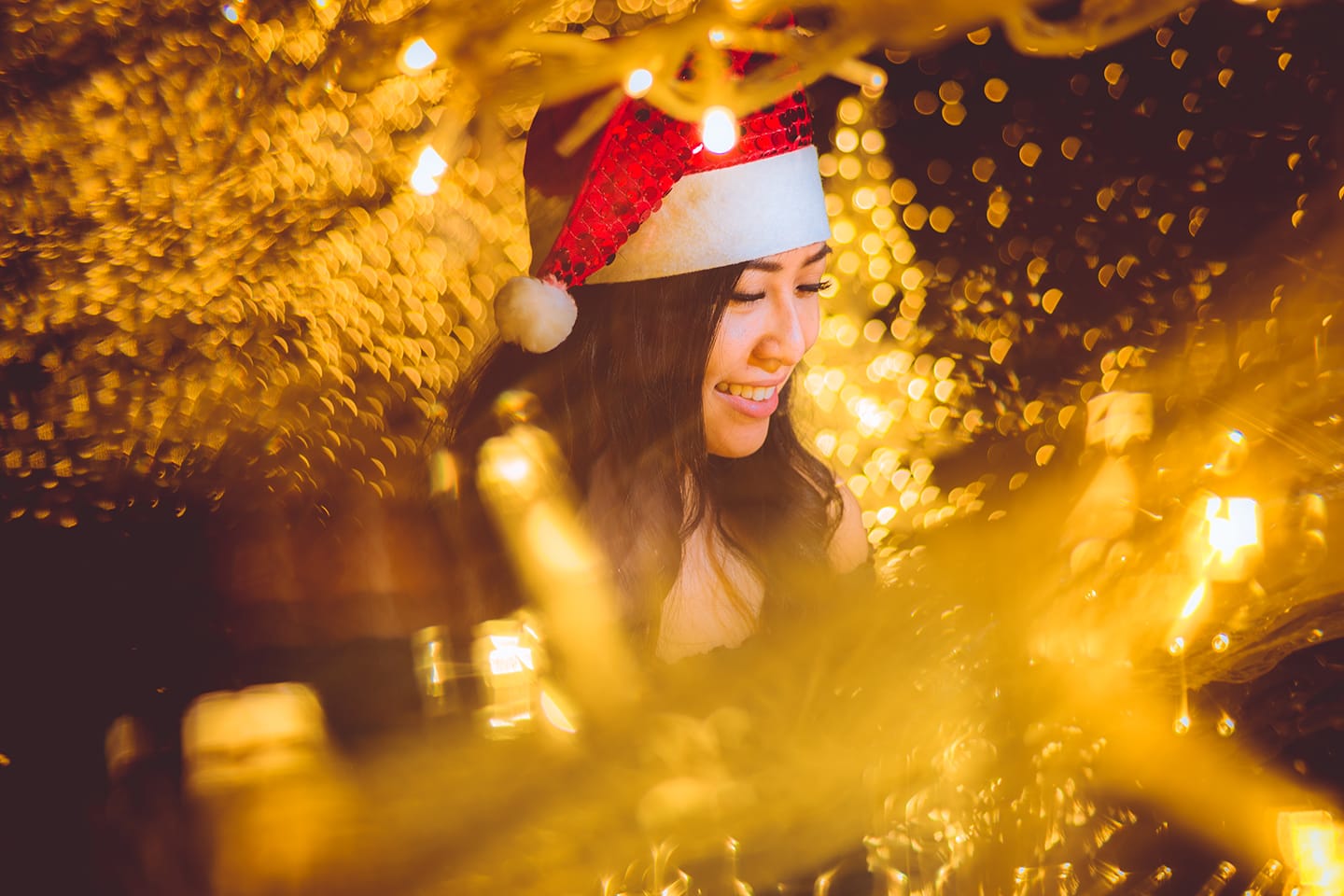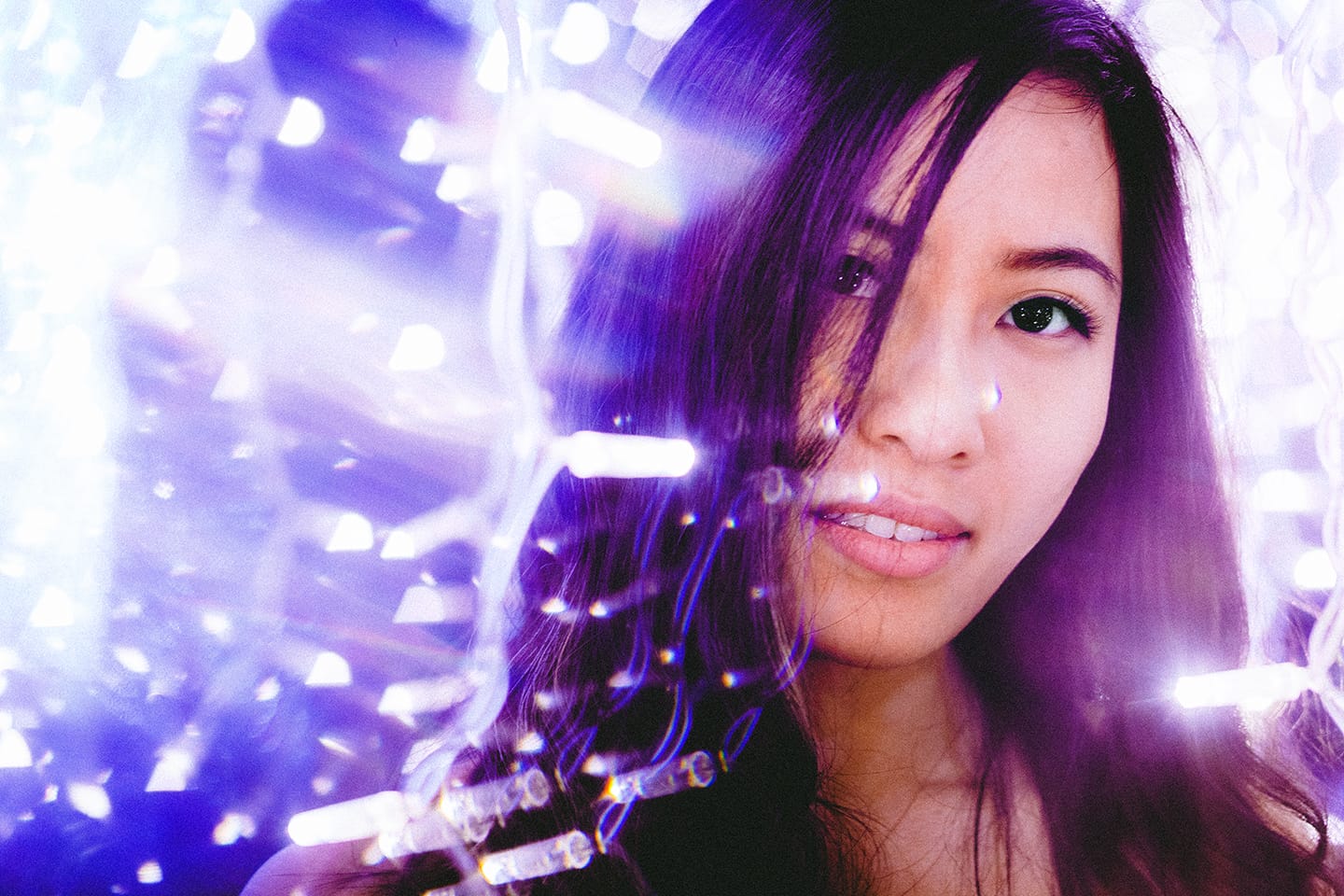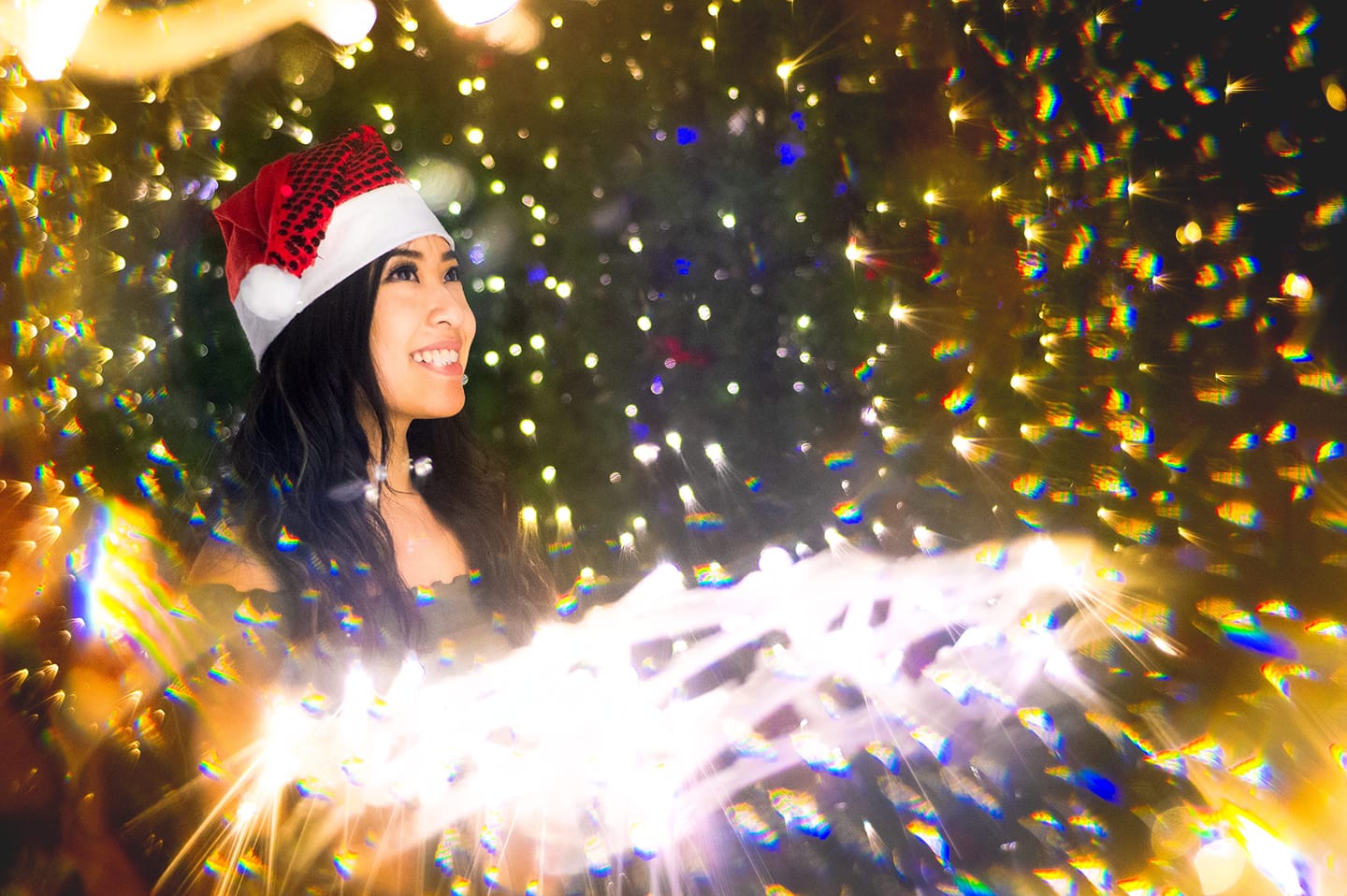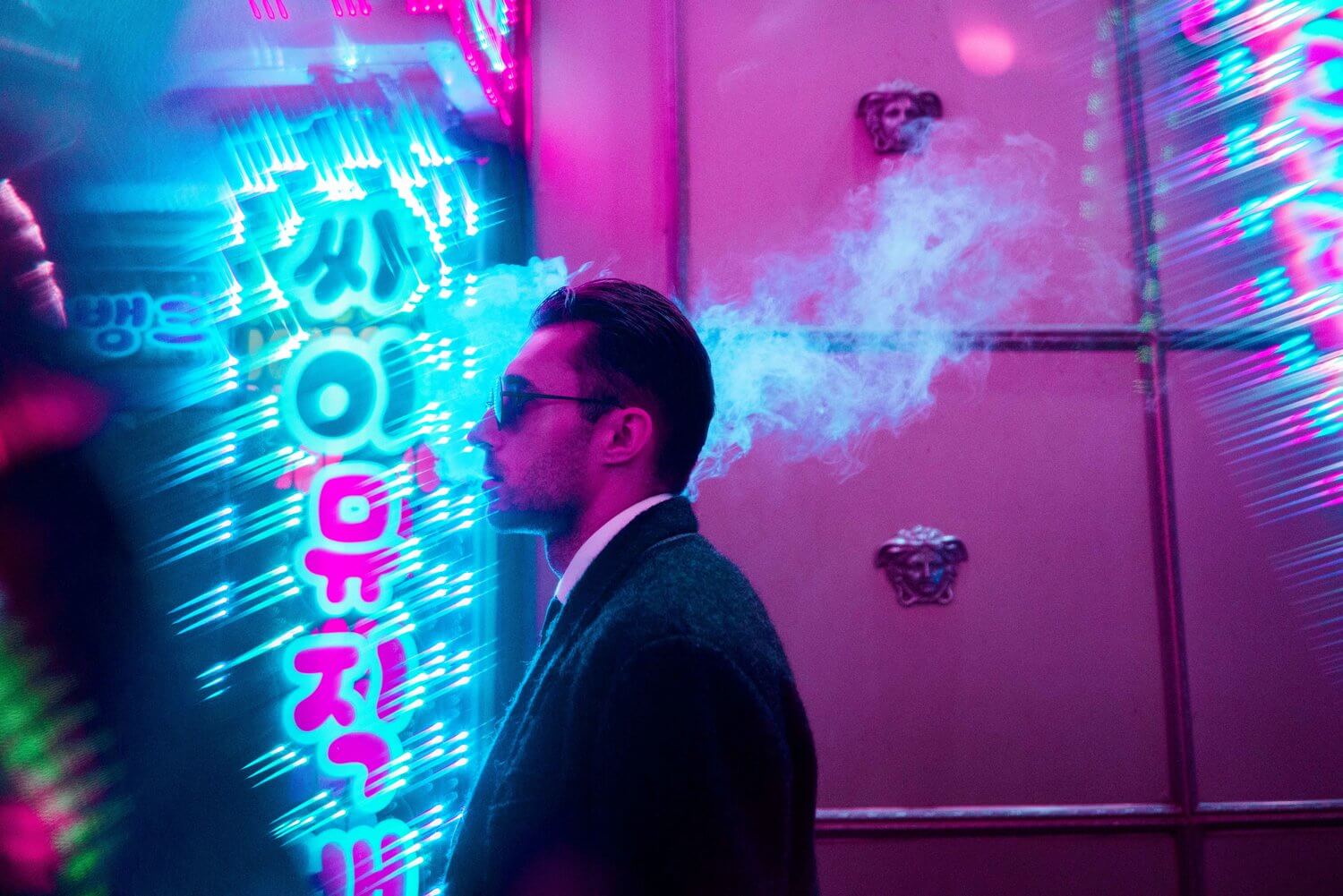Christmas Photography: Ten Easy Steps To Instantly Improve Your Holiday Photography
It's beginning to look a lot like Christmas 🎁; and Christmas looks even better when captured with Fractals. Photographers year round use Fractals for their portrait and wedding sessions, but there’s something special about the Christmas season which makes images shot with the filters pop just a bit more brightly.
What's that something special that makes holiday images glisten all the brighter? No, it is not just that special feeling of some warm holiday spirit; or a special blurred vision of reality resulting from one-too many glasses of eggnog. That something special is Christmas lights! Fractals and Christmas lights are the perfect pair; and they work in harmony to create especially beautiful images.
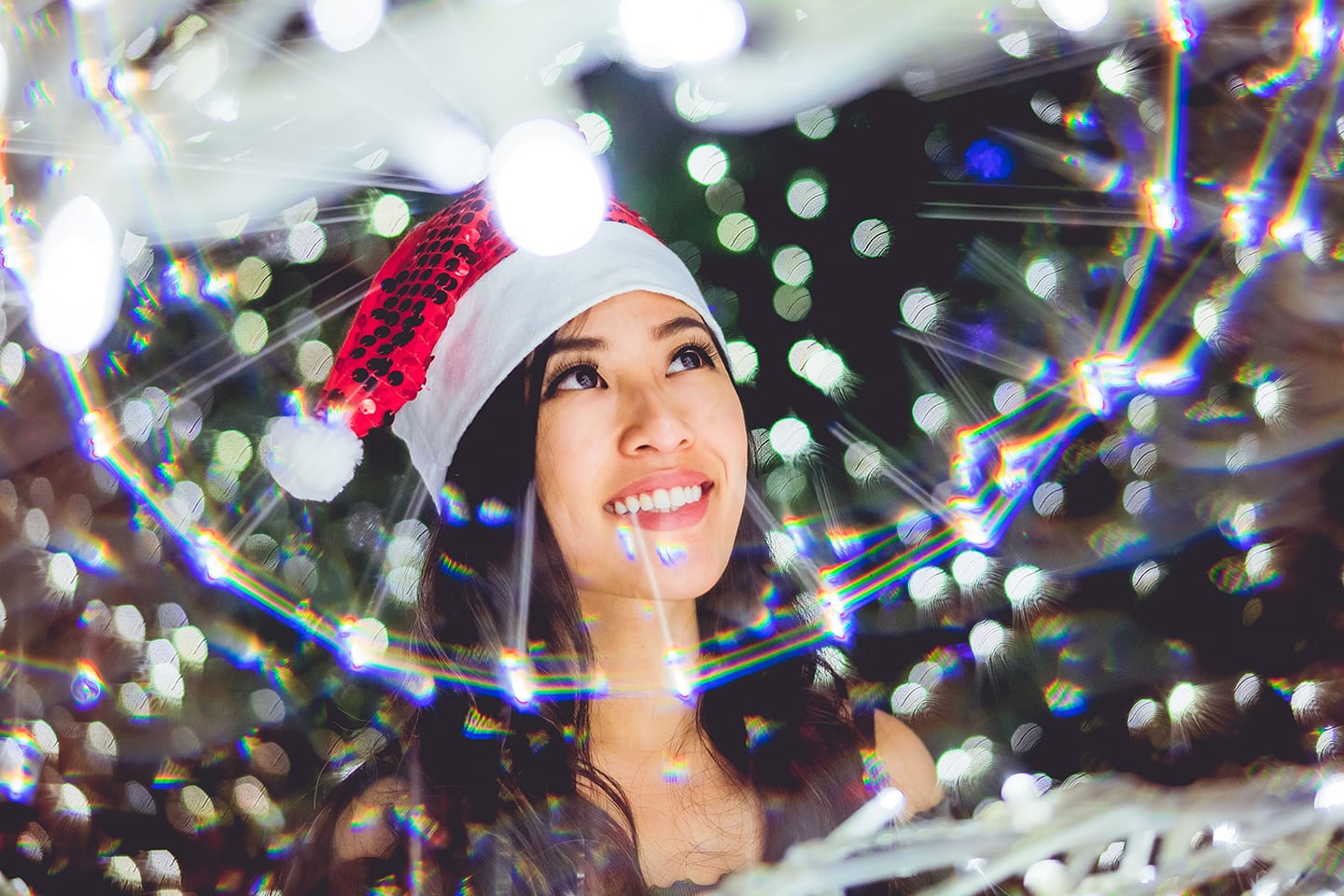
Yes, the Santa hats, the snow, the gingerbread cookies and the Christmas trees can work as great props in our holiday photos, but the fokeh (or frontal bokeh) from Christmas lights that reflects through Fractals into a camera's lens has a unique ability to create prismatic images that can seriously impress our clients.
We've been busy creating new products on the Fractals line; but decided to take a break and step away to enjoy the holiday cheer at a local Christmas festival. We brought our Classic Fractals Set and snapped away for an hour, and we're loving the results! Here’s a few tips on how you can make your holiday shoots with fractals a success.
Portraits With Christmas Lights
Using Christmas lights as the source of illumination for lighting your subjects will give your photos a distinct holiday vibe. In fact, they're so good at lighting your subject that it may potentially be appropriate to leave your typical lighting strobes at home. That is, if you trust your holiday shooting skills.
The following photos were shot without typical strobes, and with some quick color editing the color casting looks absolutely natural. In some ways, the color thrown looks even better than that which we'd achieve with artificial strobe light. And it's more festive, too! You'll have to trust your post-processing color editing abilities, as Christmas lights can cast an entire panel of non-uniform colors onto your subjects, resulting in strange looking photos. But with enough experience, there's a lot of potential for success here.
Artifical light that is generated from our strobes can often be added to scenes where we simply don't have enough available color to light our subjects.
Strobes also have the added effect of generating a white color of light that can contrast strongly with the Christmas lights in the surrounding scene.
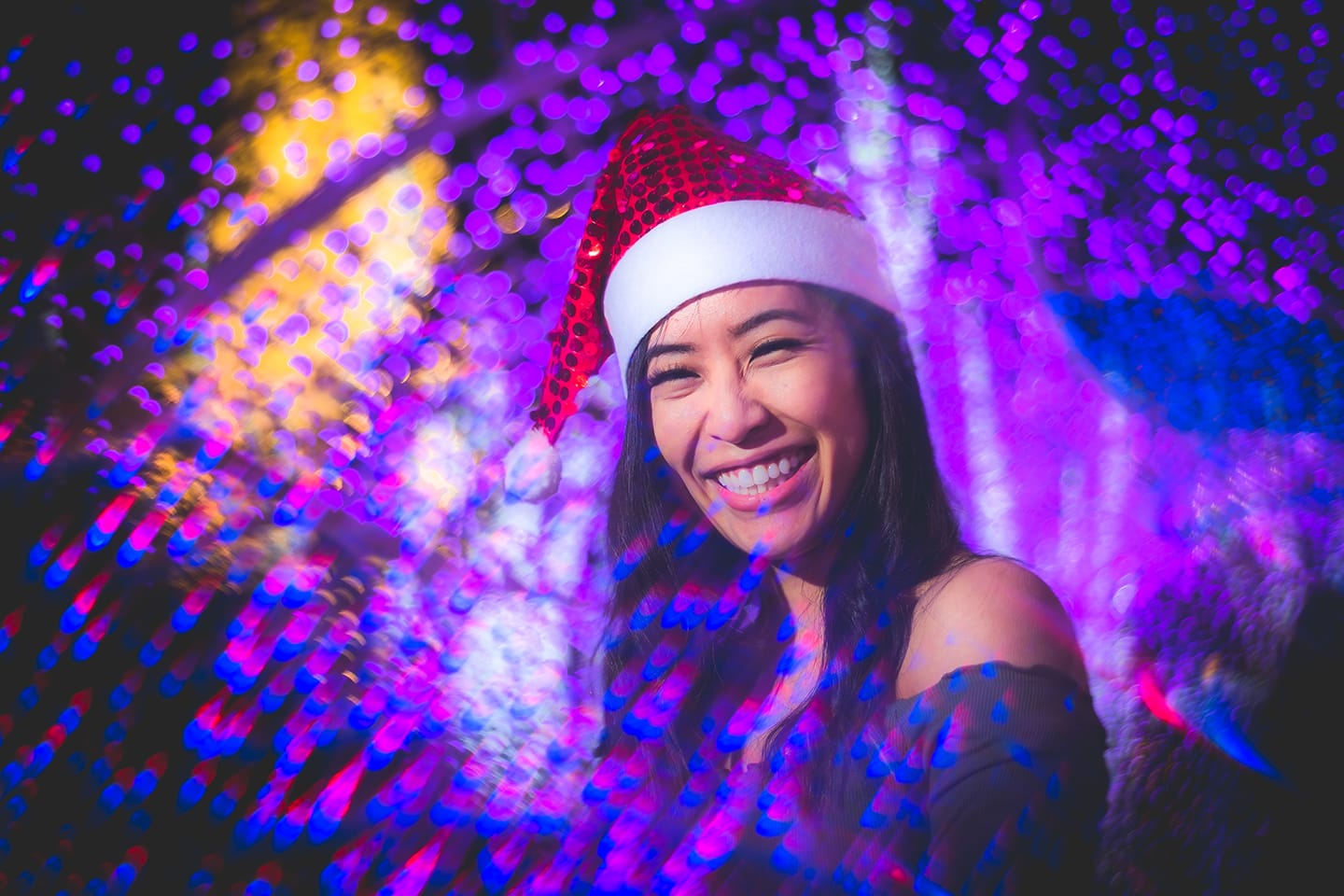
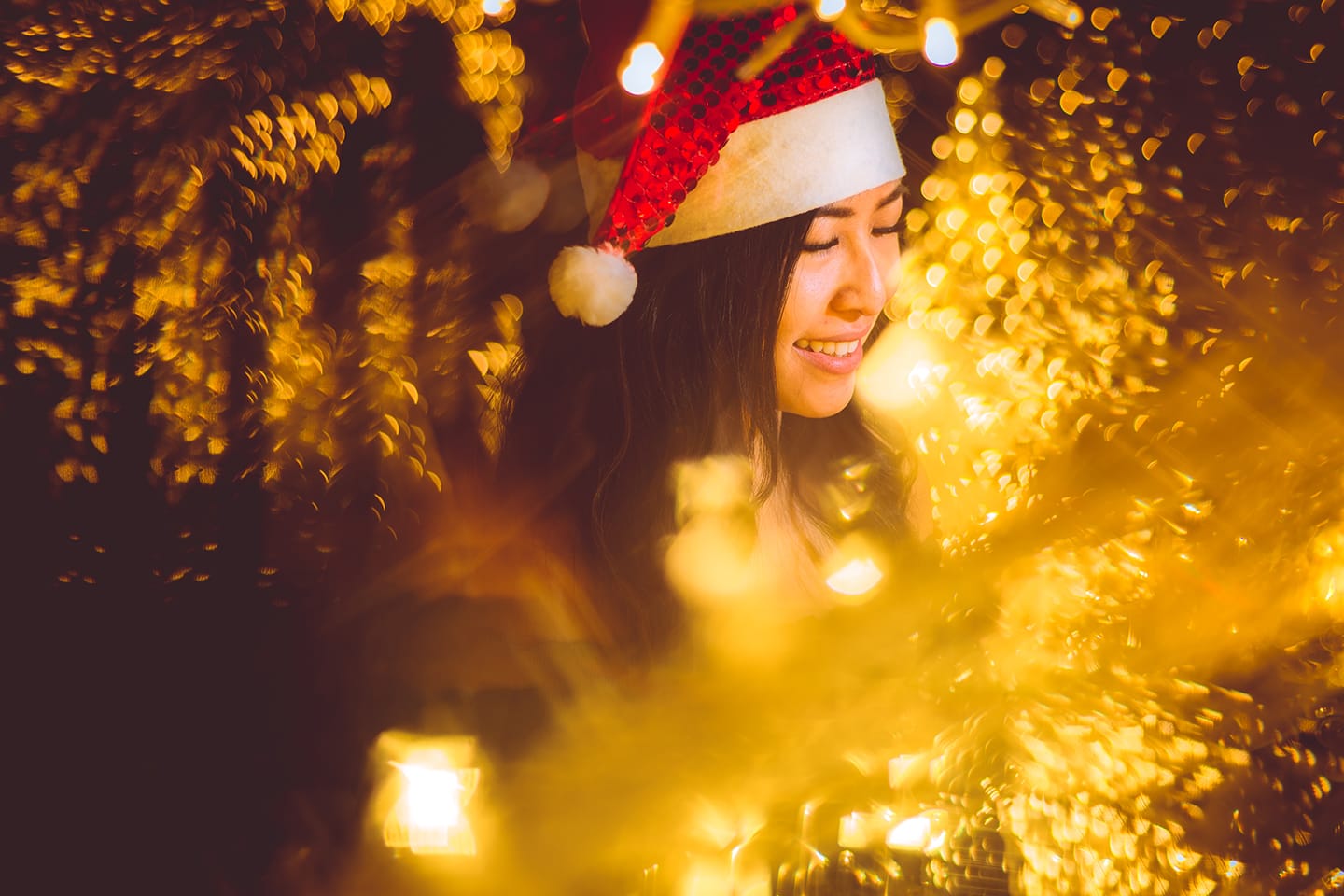
Cautions with Christmas Lights
Sometimes Christmas lights will cast a color that's just not going to work for your photo, by casting different colors which are nonsynchronous or by casting light on your subjects that is uneven or doesn't fall on your model attractively. Many a time, these images are salvageable by being made black and white and evening out the tones.

Christmas Lights + Fractals
The same rules of thumb which we use to fractalize our images the rest of the year are still applicable during Christmas, with a few minor tweaks. If you're uninitialized, you can get started by reading The Ultimate Guide to Prism Photography, which touches on setting the correct apertures, focal lengths, focusing settings, and more to help you create the best primed images.
Prisming during the holidays, is a bit different though, and we can use a few extra tricks to make sure we really exploit our environments to create photos that are incredible.
Focus on the Fokeh
Focus on the fokewha? What's fokeh? We all know what bokeh is: the defocusing of objects behind our subject, namely light sources, which produce large circles of confusion in our images.
Fokeh is a term we coined at Fractals, because the phenomenology of fokeh, or front bokeh, is very notable for light that is defocused as it hits the surface of the Fractal filter and bounces into the lens. The captured light is bokeh which appears in front of your subject, fokeh!
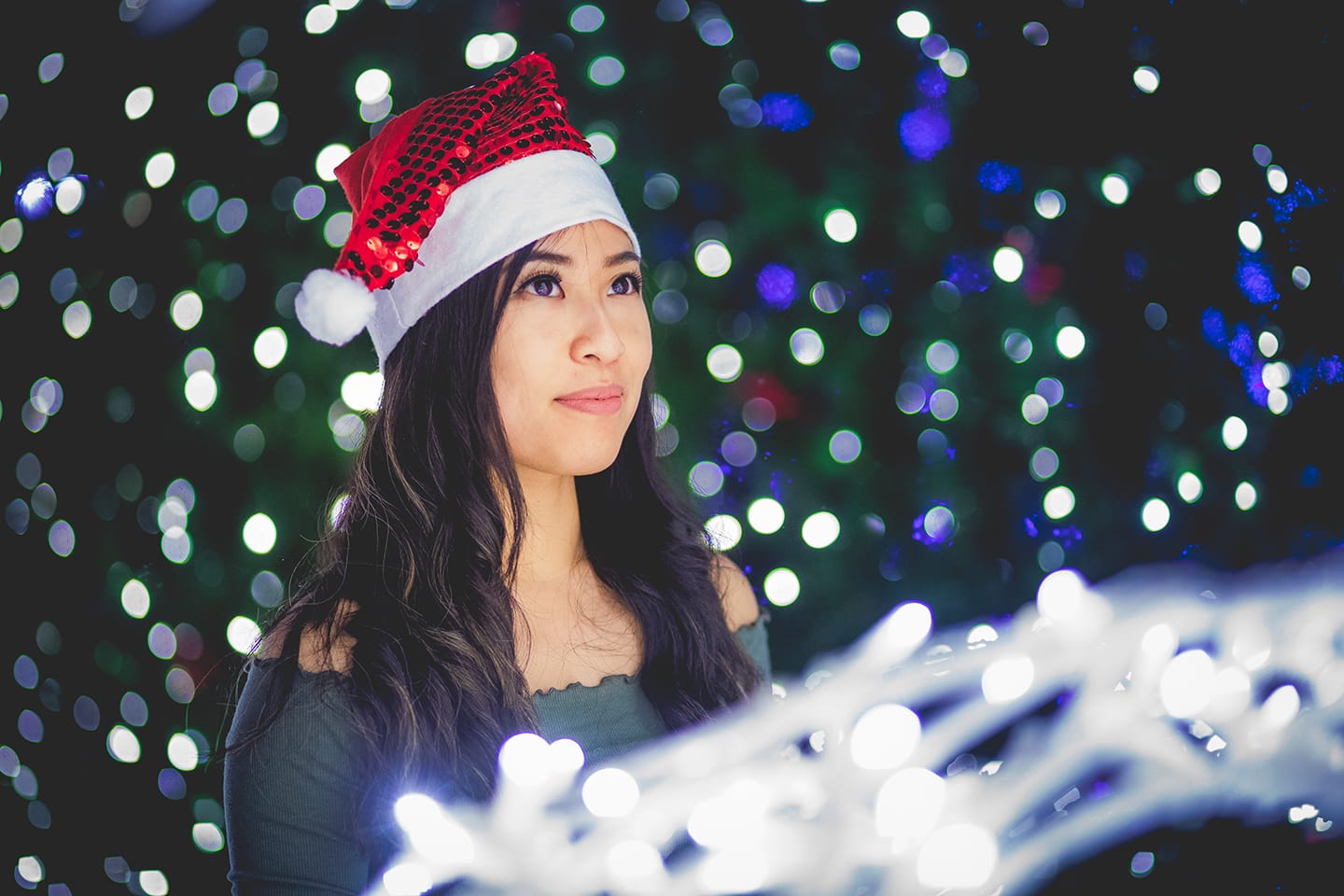
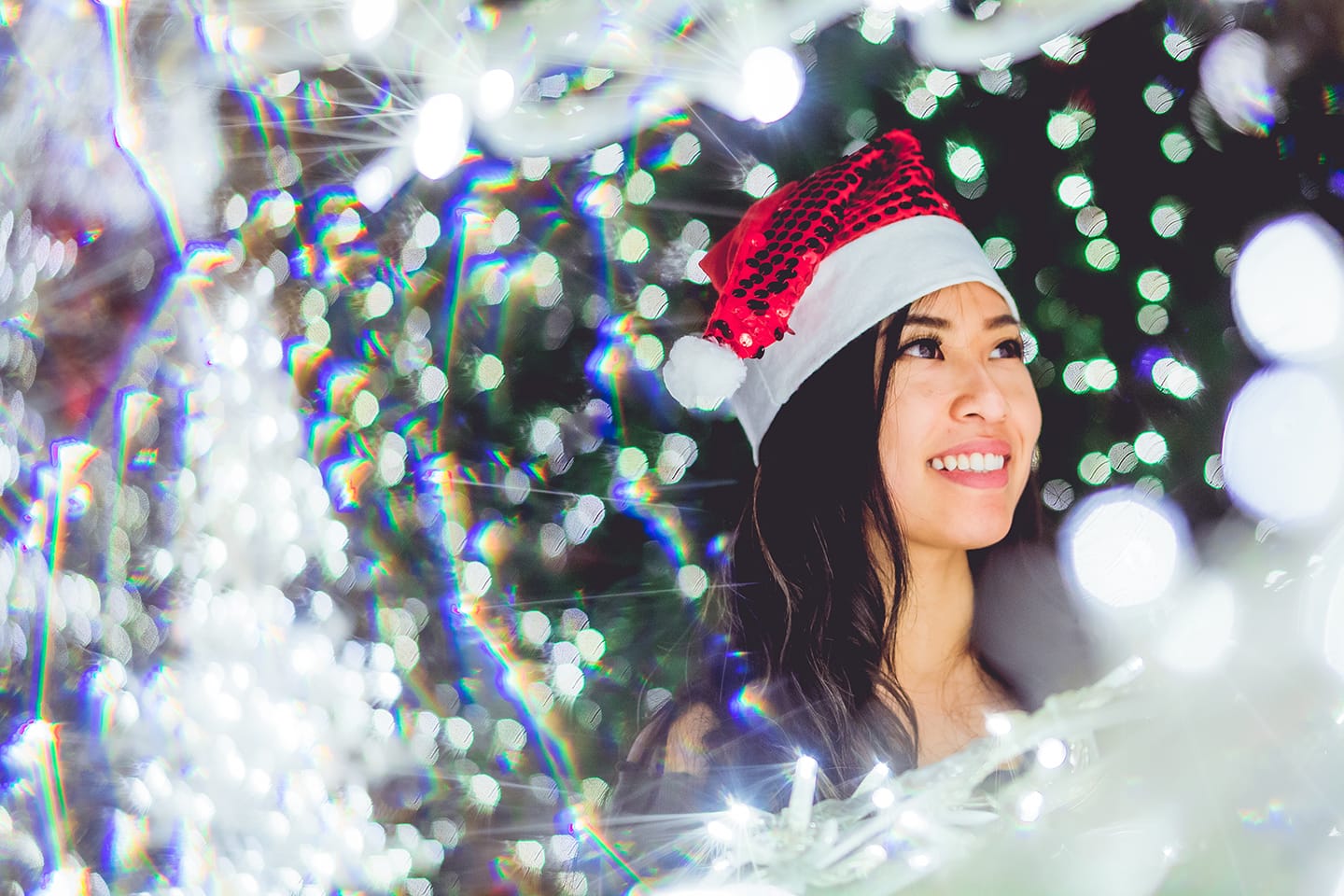
Creating Fokeh with Fractals
Fokeh is very easy to create by rotating your fractal in a manner which bounces the Christmas lights from the surrounding environment into your lens. In the image above, we can see that there are plenty of lights directly behind our subject. These light sources are prime targets for sources to be refracted through our Fractal and into our lens.
The typical way to achieve this effect is to place the Fractal parallel to the front of our lens, allowing the Christmas lights to bend and reflect slightly through the Fractal and defocus, creating some very pretty fokeh! (seen above, right).
In other circumstances, we might want to use the Fractal to bounce Christmas lights that are outside our cameras frame into the field of view; for example, if there are some Christmas lights some distance to the left or right, or even behind the photographer.
In these circumstances, it's often advantageous to tilt or rotate the fractal some angle (from 45 degrees to completely perpendicular to the front of the cameras lens), as to bounce the lights outside the field of view through the Fractal and into the field of view. Bam!
The following images were achieved by rotating the Fractal at all manner of angles in front of the lens, before snapping our images.
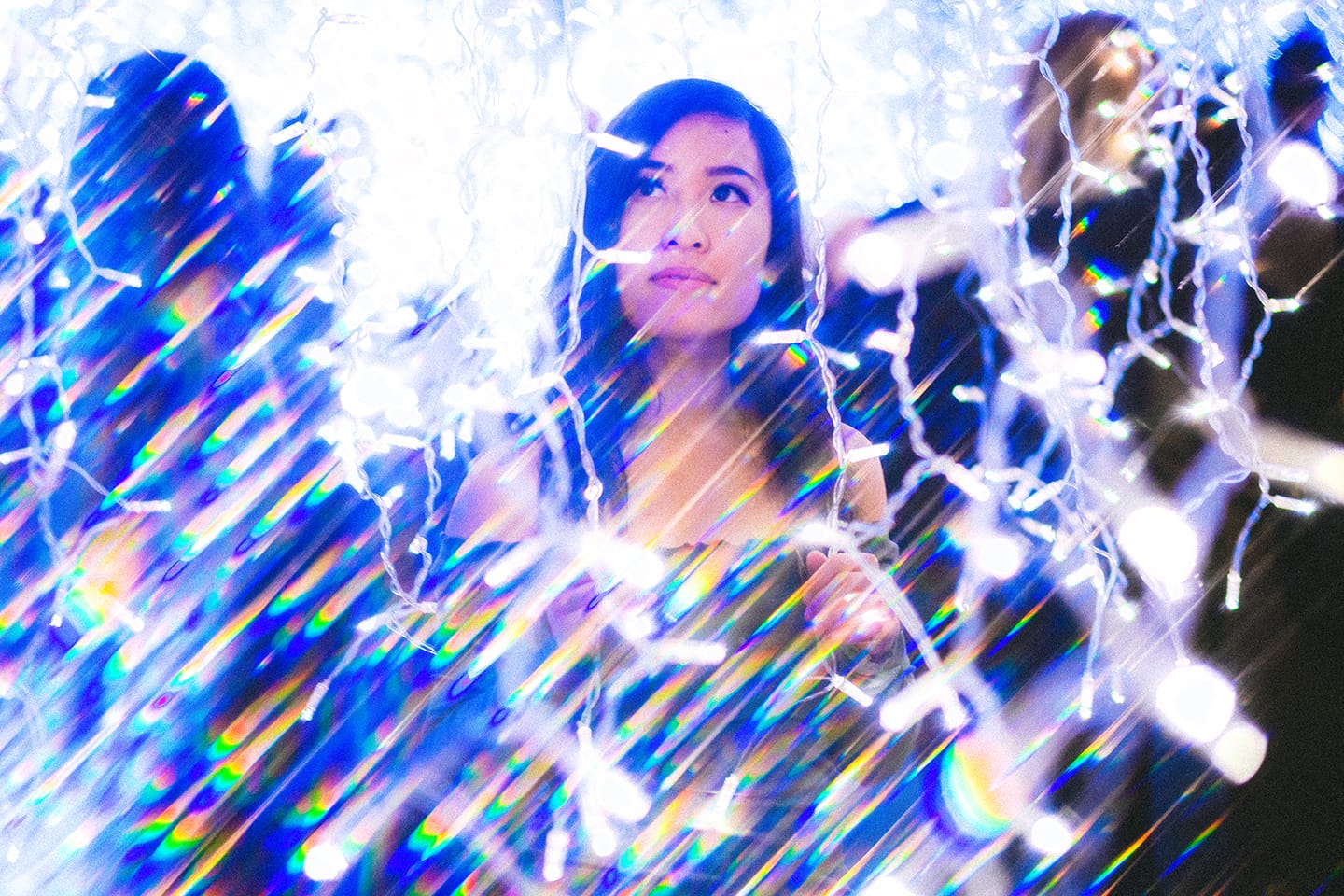
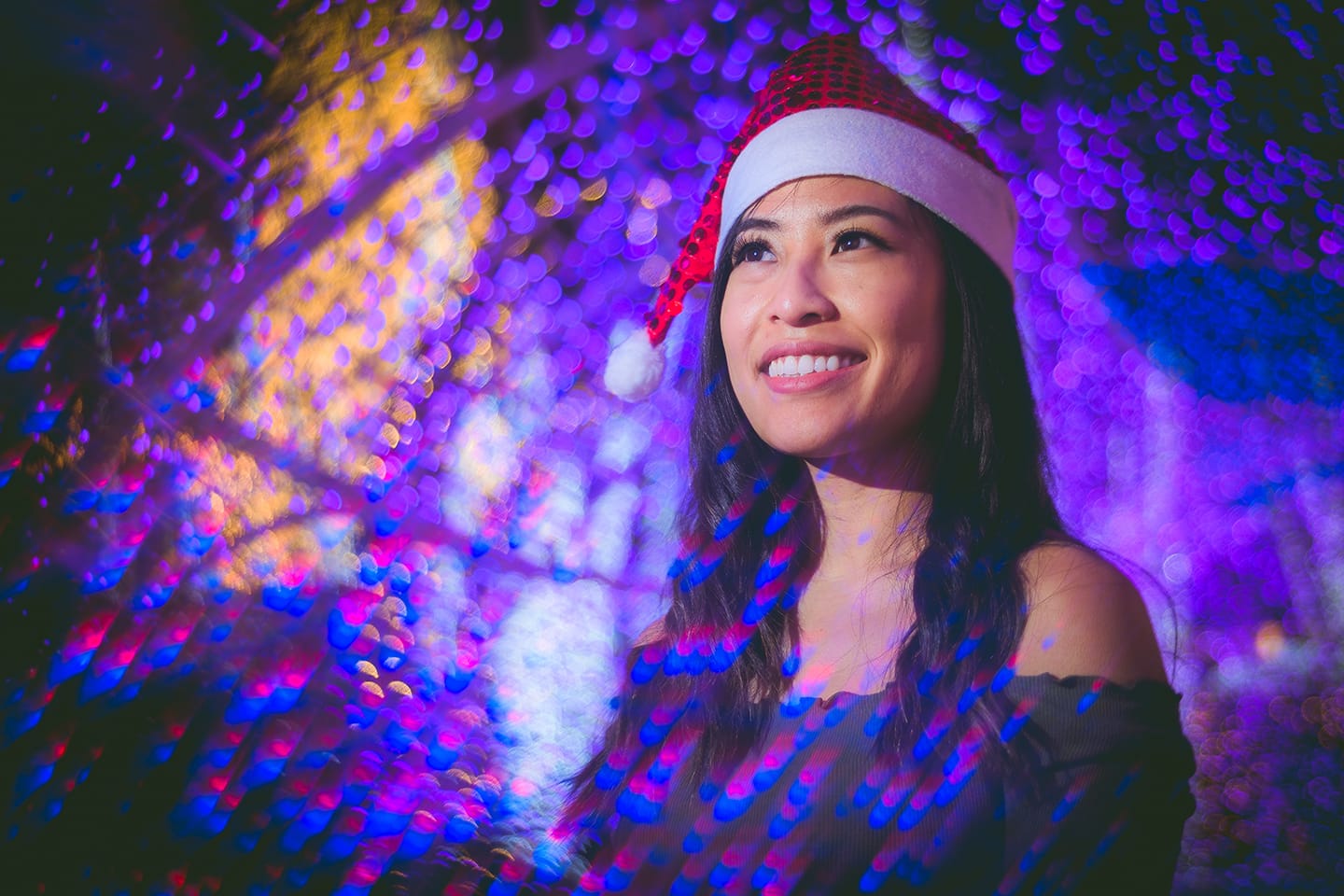
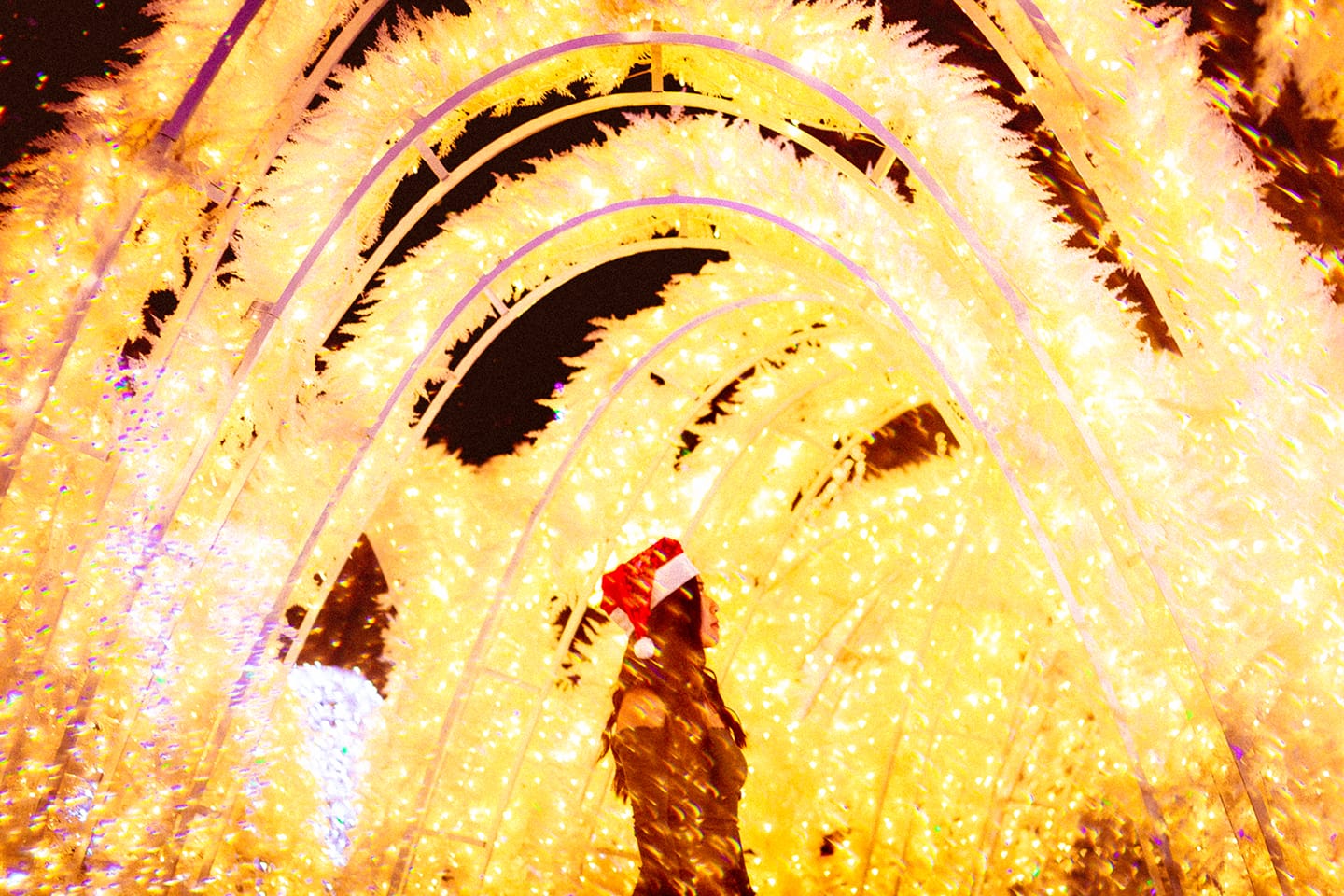
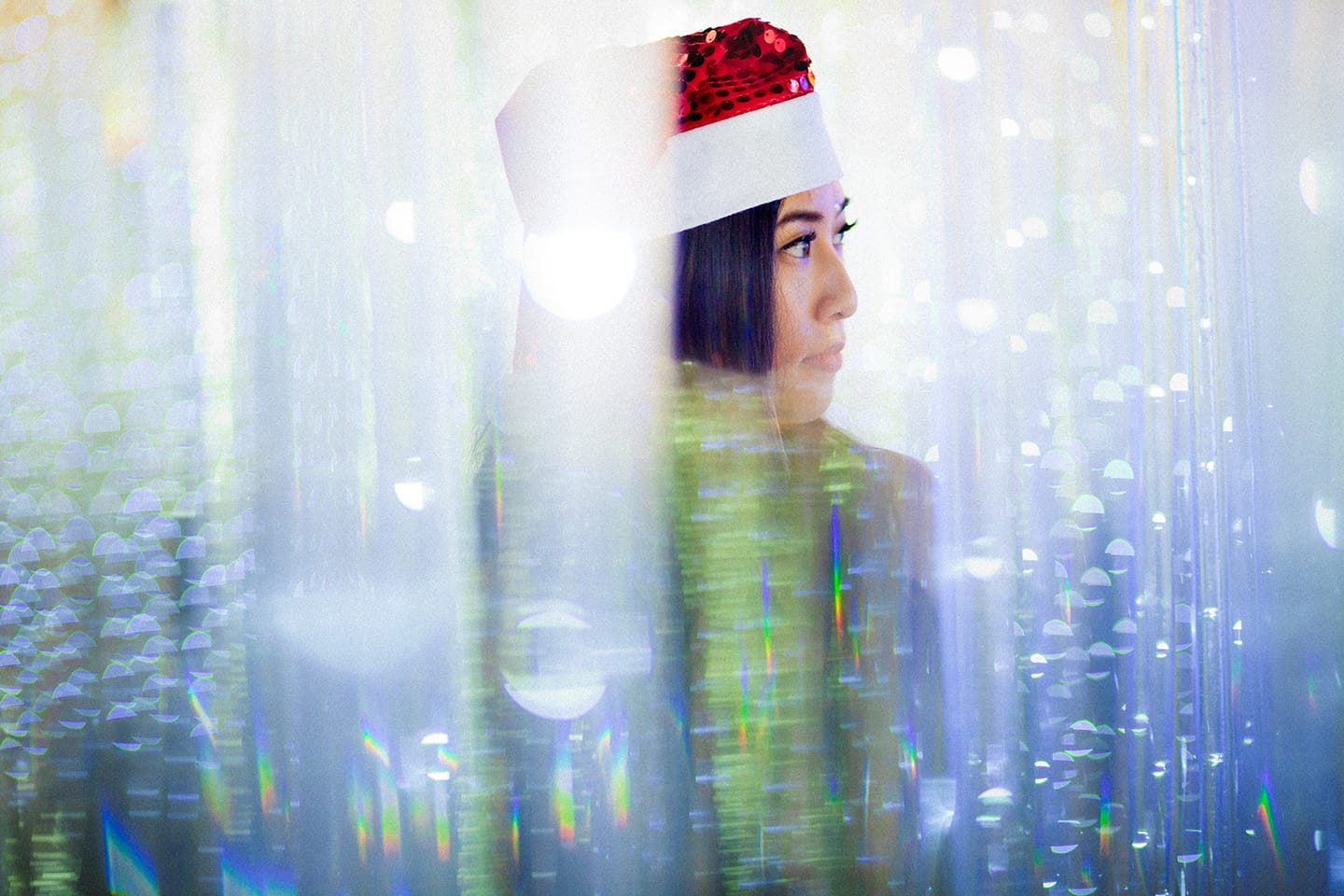
Aperture/focal length
The same rules that apply for normal prism photography are still relevant, which we explain in detail in The Ultimate Guide to Prism Photography. If you haven't viewed the guide, we'll quickly touch on some important rules of thumb.
Generally, we shoot with our aperture wide open; with an aperture of ƒ/1.4 creating about 4 times as much defocus as ƒ/2.8, and ƒ/2.8 creating twice as much defocus as ƒ/4. More defocus = more fokeh, which leads to more blur and a more dreamy prisming effect in our photo.
And 4 times more fokeh at ƒ/1.4 in comparison to that at ƒ/2.8 is a huge increase, making photos that are 4 times dreamier; so it goes without saying, bring your fastest lens, and shoot fast!
If you don't have a ƒ/1.4 prime lens, you should get one, and this is why the nifty fifty is the best lens you need for prism photography. For the images in this post, we used a 50mm ƒ/1.4 and a 85mm ƒ/1.4.
Don't overdo the defocus
The important rule of thumb here is that you don't want too much defocus, or you'll end up with a blurry mess.
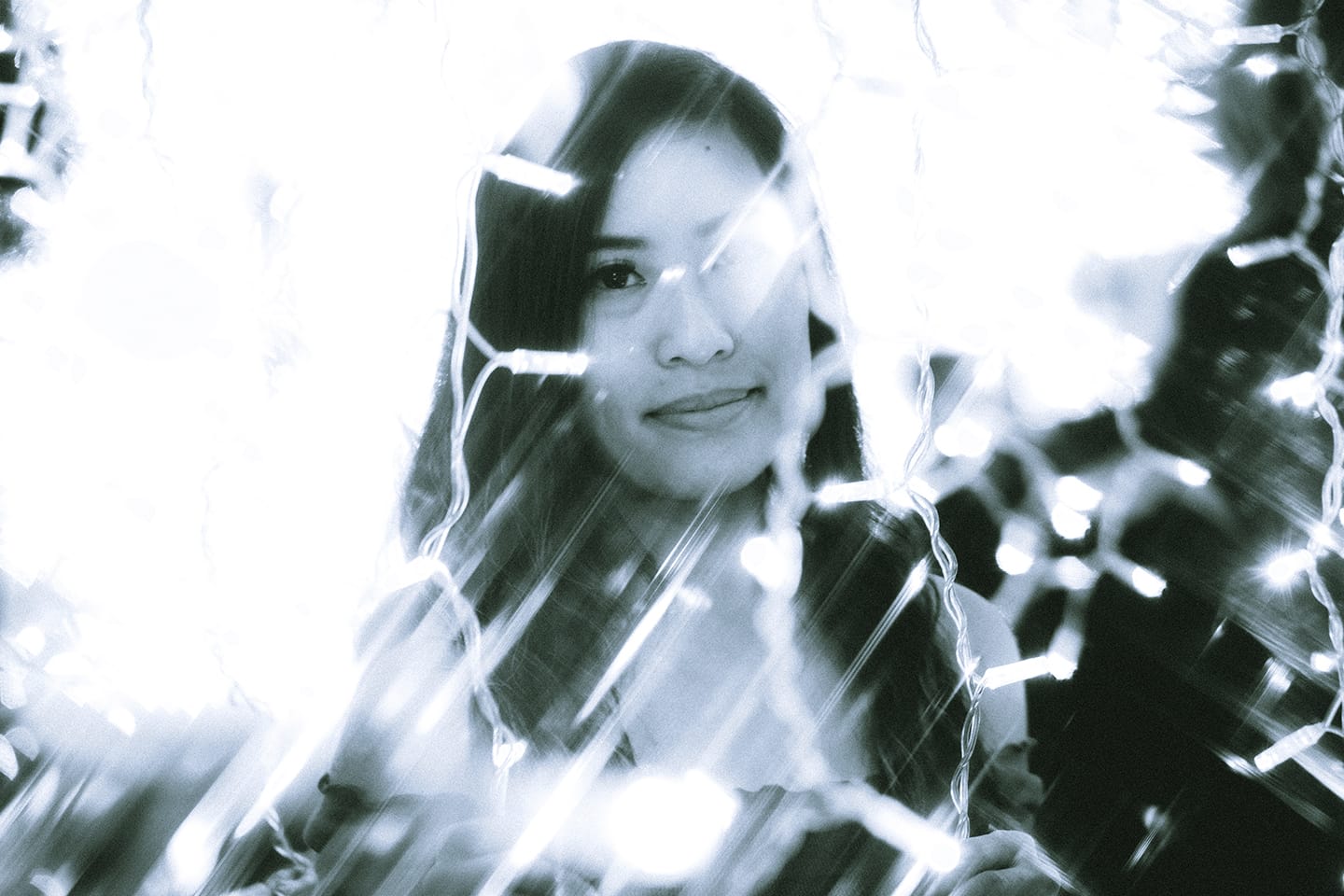
Choosing the correct aperture at each focal length
The amount of defocus created at any aperture increases as your focal length increases, so, you won't usually want to set your aperture to ƒ/1.4 if you're shooting at 85mm. Usually, you'll want to use the following guide as a general rule of thumb, which was serendipitously borrowed from our guide to setting aperture when prisming:

These are only general rules of thumb, so your mileage may vary. As always in prism photography, you'll get the best results by experimenting a lot, moving aperture continuously, and following all the other important tips we touch in The Ultimate Guide to Prism Photography. Have we plugged that enough yet?
Prism photography is not often as intuitive as it may seem; and we all succeed when we all know how to use prisms to create better images.
We'd love to see your holiday shots! Make sure to tag us on social media with your results at #getfractals.
As always, happy shooting; and happy holidays 🎄!

Published by Nikk Wong
Nikk Wong is a photographer, probably very much like yourself. He began his career shooting weddings and portraits, but quickly became obsessed with prism photography. Now, he spends his time building lenses and products in an effort to bring the magic of prisming to a mainstream audience. (Can I stop talking about myself in third person now?) 🙃